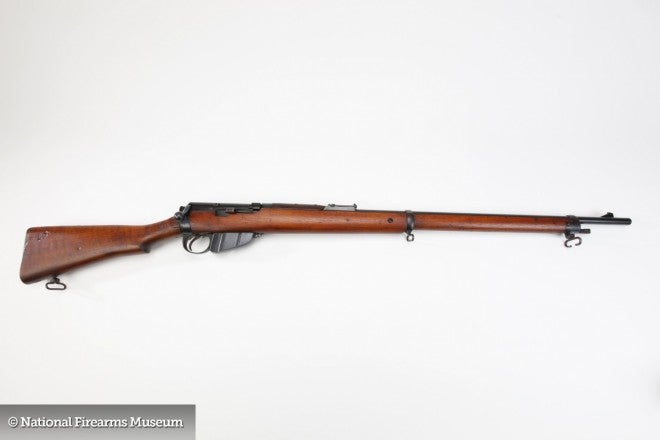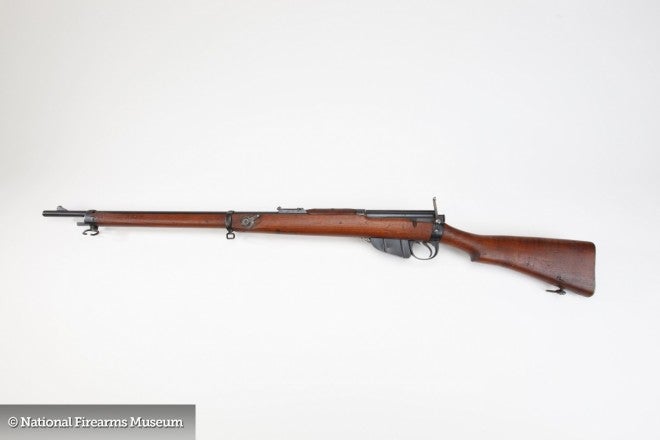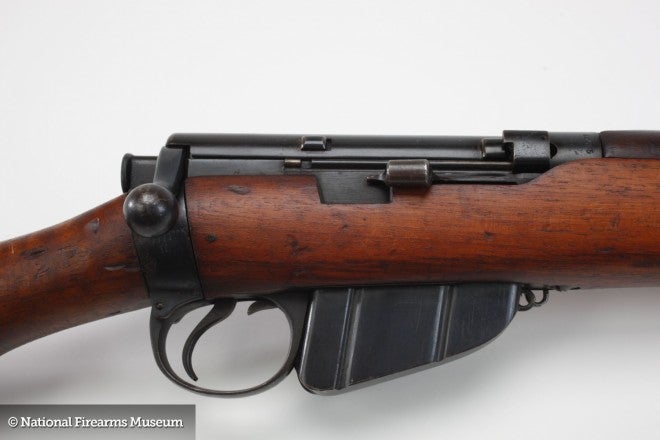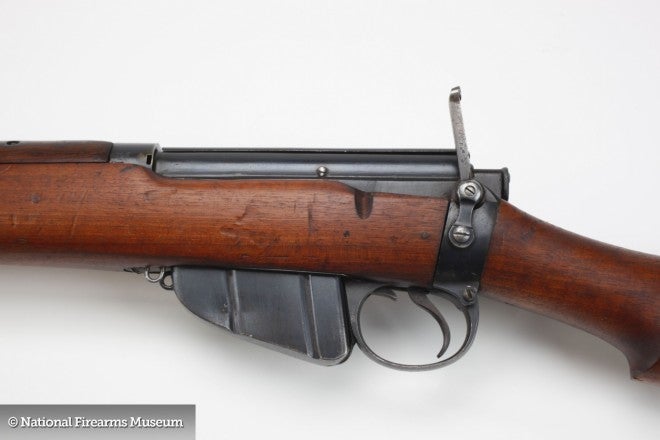In the twilight of the blackpowder era, the British tested many designs in one of the biggest firearms competitions of the era, in an effort to replace their increasingly obsolete Martini-Henry rifle. The winning design was the brainchild of Scottish-American designer James Paris Lee, one of the great geniuses of late 19th Century firearms design. Lee had invented the detachable box magazine – which my readers will recognize as the foundation upon which the collective fire modern rapid-fire individual firearms have been built – which he patented in 1875, and then combined with a sturdy and simple action, creating a rifle that was ahead of its time in a way that few weapons with a comparable legacy can claim.
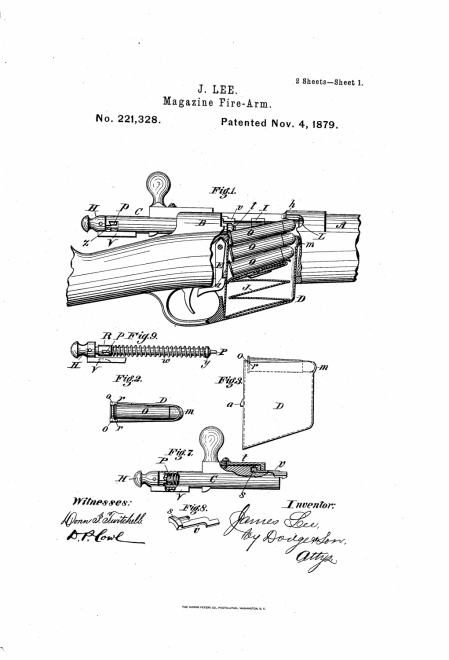
Lee’s patent drawing for his magazine-fed firearm of 1879. At this stage, the famous Lee double-stack magazine was only single stack, and held five rounds of .45-70 ammunition. Image source: google.com/patents
To manufacture his new rifle, Lee partnered with the venerable Sharps Rifle Co. of Bridgeport, Connecticut. Lee’s own company marketed the rifles, which were made by Sharps, as the Model 1879. A piece of trivia concerns Sharps’ production superintendent at the time, one Hugo Borchardt, who would go on to be another one of the great firearms designers, producing the first selfloading pistol of any real success, a design that laid the foundation for the Luger pistol, itself the first great runaway success in semiautomatic handguns. Lee had his eye on a Navy contract, that service having expressed interest in repeating designs to replace the outmoded 1873 Trapdoor rifles. Lee’s design was lightweight even with a 29″ barrel, and was shockingly modern by the standards of the day, with an easily disassembled bolt that was very strong and resistant to fouling. The Navy did end up ordering 1,000 Model 1879 rifles, 300 of which were produced by Sharps and the remainder by Remington after Sharps’ bankruptcy. Later models of this type would be produced for the Navy and ordered for US Army trials, but here the tale diverts away from the Americas, to an island across the Atlantic.
Competing against other repeating rifles to become the standard weapon of the British Empire, the Lee won the competition, and combined with the British-designed small-caliber .303 cartridge (then still a blackpowder round) feeding from an 8-round staggered column magazine, and polygonal rifling designed by William Ellis Metford, Lee’s action was adopted with substantial modification, as the Magazine Lee-Metford in 1888, two years after the French had secretly fielded the smokeless powder Lebel that would help obsolesce it. The Lee-Metford’s descendants would replace it, and the ultimate No. 4 rifle utilizing a simplified and improved action would serve Commonwealth troops into the 1960s.
But this post concerns the Lee-Metford. Though a primitive black-powder weapon by today’s standards, the Lee-Metford is still arguably the most elegant member of the Lee-Enfield family, and shooting blackpowder gives the Lee-Metford shooter a thoroughly different experience than others shooting the smokeless-powder Enfields. Though he uses a low charge of smokeless powder, we can get a taste of this experience through the excellent britishmuzzleloaders channel:
Since Rob is never willing to leave us out of any part of the 19th Century shooting experience, he has also published a very thorough video on reloading the smokeless powder .303 ammunition he uses in the Mk. I Lee-Metford:
The National Firearms Museum has high resolution photos of one of the rifles in their collection, a Magazine Lee-Metford Mk. II, which features the now famous double-stack 10-round magazine that would be retained in all subsequent .303 caliber models of the Lee bolt-action rifle family:
 Your Privacy Choices
Your Privacy Choices

